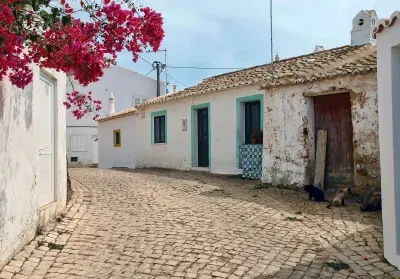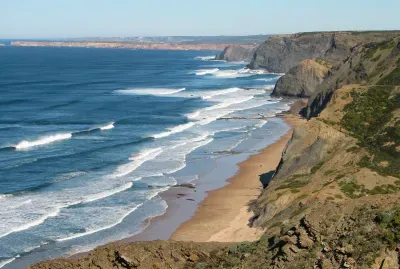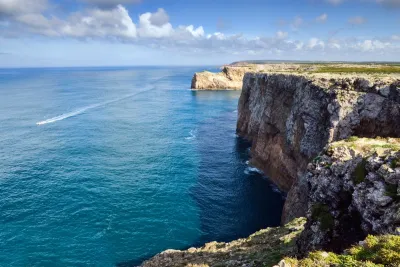
The quintessential Algarve village of Vila Do Bispo with its narrow streets, whitewashed houses, and peaceful cafes sits almost at the extreme southwest corner of both Portugal and Europe. It is a small village, but caters well for visitors and locals, with two banks, a supermarket, a medical centre and plenty of smaller shops, cafes, and a surprising number of restaurants. Fresh fish is the most popular dish on offer here thanks to the proximity to the sea, but during the hunting season which runs through the autumn, local delicacies such as wild boar, hare and quail can find their way onto the menu.
The primary point of interest in the village is the 16th century church on the eastern side of the settlement which stands above a group of other whitewashed buildings.

This place is the last stop before the town and fortress of Sagres and the Cabo de São Vicente (Cape St Vincent), which was once thought to be the end of the world. Before the explorer Christopher Columbus discovered the Americas, it was believed that any sailor who ventured too far from the coast would face sea monsters that could devour an entire ship whole.
The presence of the sea can be felt with the fresh, clean air, the pleasantly mild, sunny climate (it is one of the sunniest places in Portugal), and the various surf shops scattered around. There are many long, sandy beaches in the area, some of which are almost always deserted. This is the Algarve's west facing Atlantic coast - a very different place to the more familiar and sheltered south coast. Excellent surfing conditions can often be found along the beaches of this coast between Sagres and Cabo de São Vicente. For visitors who want to get away from the summer crowds found in the larger resorts of the Algarve, this place provides a perfect retreat.

The area is synonymous with Prince Henry the Navigator, who was born in the small village of Raposeira just to the east of Vila Do Bispo. He is seen as the father of the Portuguese Age of Exploration and discovered Madeira, Cape Verde, and much of the West African coast.
The main square of the village, which houses a small, attractive park, has been named Praca de Tanegashima. This is after the Japanese island of Tanegashima, which was the first stop for the Portuguese explorer Fernão Mendes Pinto, the first European to ever visit Japan. The village is twinned with the Japanese town of Nishinoomote which is found on the island.
Humans have inhabited this part of the Algarve at least since the end of the last ice age, and perhaps for much longer. The surrounding countryside is testimony to this and is dotted with a large number of stone formations, known as menhirs, which were erected in prehistoric times. Before Roman times, the Cabo de Sao Vicente was an important religious site. This tradition continued in the Middle Ages, as many pilgrims travelled through the area to visit the burial site of Saint Vincent. In fact the lighthouse incorporates the buildings of a 16th century monastery.

The countryside is popular with walkers, and much of it is part of the protected Costa Vicentina Natural Park which is well known for its wonderful plant and birdlife, particularly in spring when the flowers are in full blossom and the colours can be seen in all their glory.
Vila Do Bispo is well connected with the rest of the Algarve, with an expressway (the N125) running as far as the village, which changes to a single track road onwards to Sagres.